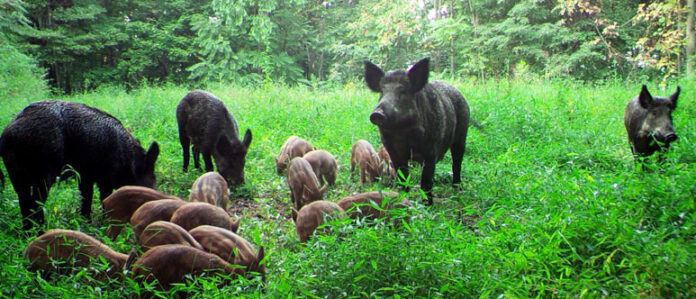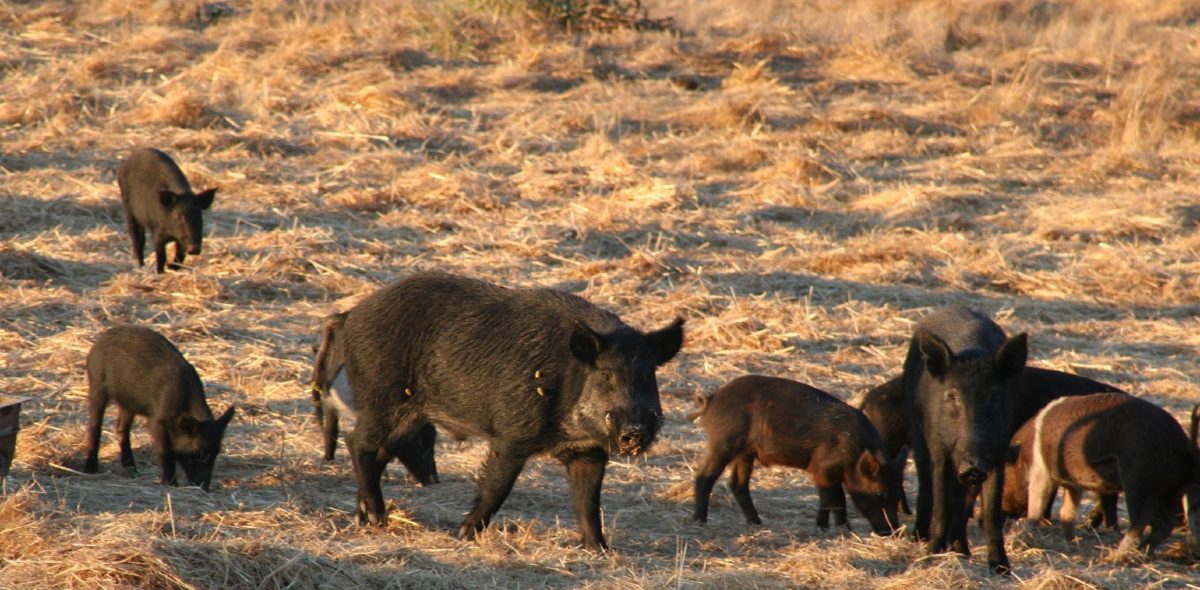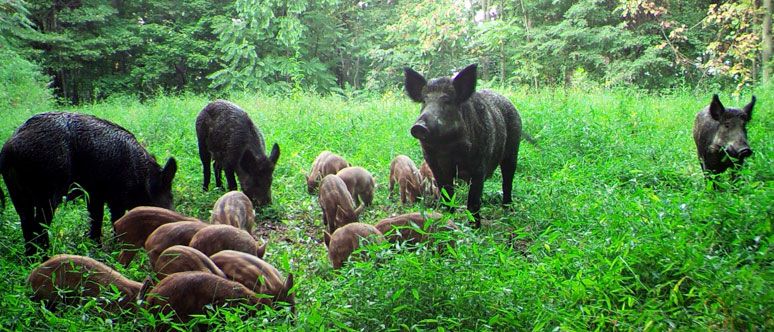HARLINGEN — In North America’s longstanding war against the depredations of feral hogs, it’s a 500-year-old fight with no end in sight.
Last week officials with the U.S. Department of Agriculture, biologists, wildlife experts and others participated in what they called the 2020 Virtual Wild Pig Conference, a series of YouTube presentations where the experts discussed the latest developments in their fields.
Dale Nolte is feral swine damage management program manager for the U.S. Department of Agriculture’s Animal and Plant Health Inspection Service, known as APHIS.
“Why do we care? Why did the USDA get involved with feral swine? And the answer is straightforward: It’s the problems they cause,” Nolte said. “Feral swine are estimated to cause maybe $1.5 billion in damages every year. But we have reason to believe now, after collecting more data and doing some research, that those numbers probably exceed $2.5 billion a year. …
“I don’t know of a crop they don’t damage, they carry disease, they are a direct threat to humans, they are an indirect threat by carrying zoonotic diseases, they impact infrastructure, they damage landscape, pretty much across the board,” he added. “If you have feral swine, you’re going to have damage.”
Spanish, now Fords
Domestic hogs first came to the Americas with the Spanish explorers of the early 16th century, imported as a moveable feast or larder the Spaniards could tap as they made their way inland from the coast.
“Basically the Spanish explorers would release them as they were moving across the continent because they knew they were likely to survive and there’d be a food source when they came back,” Nolte said.
“They’re very opportunistic, omnivorous, will eat anything,” he added. “Highly intelligent and reproductive rates are very high. They adapt very well to other environments.”
Nolte said for some reason in the late 1970s and early 1980s, feral pigs began expanding their range in the United States, while at the same time their populations within existing ranges became much denser.
Today they continue to expand their range in altogether new ways. After all, they are a highly adaptable species.
“How are they spreading? We have reason to believe they’re probably spreading at 55 to 70 miles per hour in the back of pickup trucks,” Nolte told the conference.
Big in Texas
In Texas, feral hogs have been documented in 253 of the state’s 254 counties, the exception being El Paso County at the extreme western tip of Texas.
But even there, some experts say, they have doubts about a complete absence of hogs.
“There’s no confirmation of pigs in El Paso County, but having worked out there in that desert for a good chunk of my career, and seeing the changes to the landscape, you don’t rule it out,” said Justin Foster, Texas Parks and Wildlife Department research coordinator in Region II in the Panhandle.
Nationally, there have been some successes. Nolte said four states have eradicated feral pigs, and six others are being monitored to see if wild hogs there have been eliminated.
Foster is a wild pig expert who is skeptical of ever seeing anything like that in Texas.
“In terms of total eradication or reduction of the population to the point where damage is no longer an issue?” he asked. “No, we’re not in that situation. Given the history status of the pig population in Texas, I would not say that the effort is not being made, but our problem is just huge and longstanding.”
Men moving pigs
The reason feral hogs are hitching rides in the beds of pickups is probably two-fold. One, property owners want to put huntable game on their land for recreational purposes, and two, they can get other hunters to pay for the privilege of hunting hogs on their land.
Foster says he’s not surprised, given the long and intimate history of men moving swine.
“I would say this happened worldwide, including Texas,” he said. “I think an interesting fact is that wild pigs, whether feral or native, wild Eurasian boars in Europe, it goes to the human fascination with sus scrofa.
“Man has been moving sus scrofa or wild pigs since the Middle Stone Age or Neo-Mesolithic times, and specifically I think in northwestern Europe, possibly Scandinavia, where its documented they were moving wild pigs and this is in the pictographs and things of that nature, and the indications are that they were hunting them.”
Between 7,000 and 15,000 years have passed since those long-ago days of hunter-gatherers roaming Europe, but Foster says the motivations of humans have not changed despite the influence of a little civilization.
“Just ask yourself, in today’s society, what’s the value?” he said. “The value is in recreation, and in any case, it’s putting wild boar on your table.”
In the Valley
In the Rio Grande Valley, feral hogs are believed to be one of the major contributors to the degradation of water quality in the lower Arroyo Colorado.
Animal feces from wild pigs, javelina and domestic livestock are a long-held concern about the lower reaches of the arroyo.
We see the impact of that pollution when, following heavy rains, a north wind blows the waters from the arroyo south from where they empty into the gulf, raising fecal bacteria levels on South Padre Island beaches.
For the last seven or eight miles of the arroyo’s flow, it runs through or past the Laguna Atascosa National Wildlife Refuge, where a large wild pig population is a contributing factor to this pollution of the arroyo.
Yet refuge officials have been aggressive in trying to remove, or at least contain, the non-native feral hog population. Refuge officials offer annual hunts for hogs, and have resorted to aerial culls and pursue an ongoing trapping and removal effort.
Foster said he has no personal experience of wild hog control efforts in the Valley, but does have some ideas on their efficacy.
“I would not expect that there are any long-term, large-scale reductions of pigs in a region that is so densely populated,” he said. “Many managers would like to see them eradicated, but the probability of that happening when you have it going on around you is not good.”







